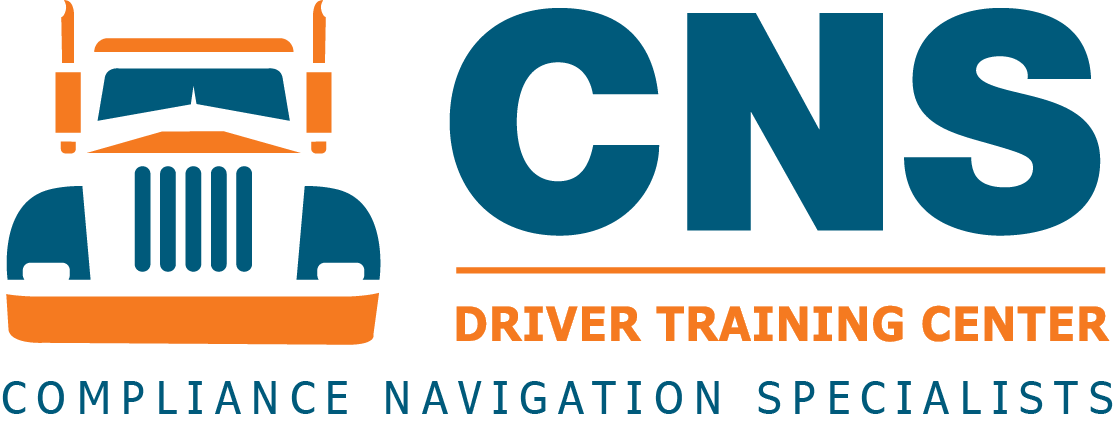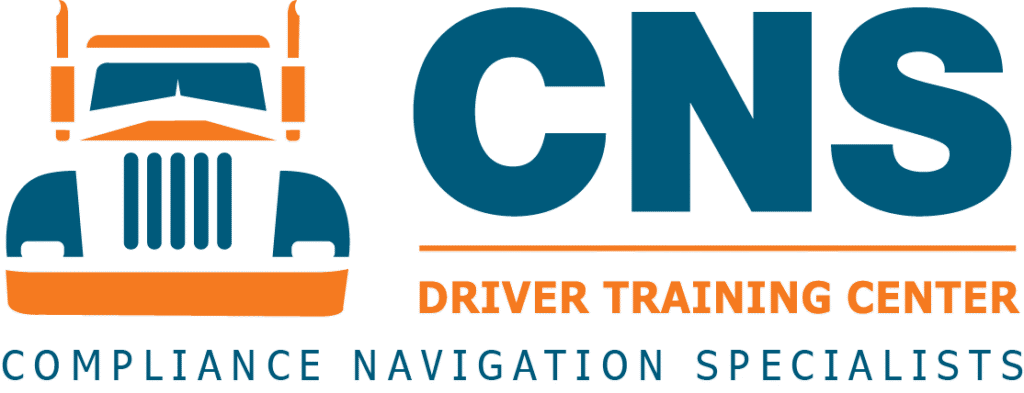Winter is one of the toughest times of year to drive — and that’s exactly what makes it the best training environment.
When it comes to onboarding new drivers or upskilling current employees, timing can make all the difference.
Many companies with a fleet of drivers wait until spring or summer to send trainees for CDL training, assuming the better weather will make the process smoother.
But at CNS Driver Training Center, we’ve found that winter is actually the best season to train new drivers — for both the drivers and the company.
Here’s why forward-thinking fleets take advantage of the winter months for CDL training.
1. Get a Head Start Before the Spring Hiring Surge
Spring and summer bring an influx of new students to CDL schools, which can lead to scheduling delays and limited instructor availability. By sending your trainees during the winter, your fleet can:
- Avoid long wait times and crowded classes
- Get drivers trained, tested, and on the road sooner
- Be fully staffed when spring freight demand picks up
This proactive approach helps your fleet stay ahead of competitors scrambling for qualified drivers when business ramps up.
Pro Tip: Enroll drivers in our FREE CDL Permit Prep Course for expert study help and test preparation.
2. Build Drivers Who Can Handle Real-World Conditions
Winter is one of the toughest times of year to drive — and that’s exactly what makes it the best training environment.
Drivers who train in the winter graduate with stronger skills, sharper instincts, and greater confidence — qualities that directly reduce accident risk and improve safety scores.
At CNS Driver Training Center, we teach drivers to stay safe and confident in challenging conditions:
- Navigating slick roads
- Managing traction and safe braking
- Conducting thorough pre-trip inspections in cold weather
For example, here are some key winter pre-trip steps drivers will learn early in their driving career:
- Heater and Defroster: Ensure both are working properly to clear frost, ice, and condensation.
- Battery: Test charge and clean terminals; cold weather can reduce battery efficiency and increase the likelihood of a no-start.
- Fluids: Use winter-grade windshield washer fluid, and check engine oil, coolant, and brake fluid levels. Cold can thicken or freeze standard fluids.
- Wipers and Lights: Inspect blades for wear and ensure all exterior lights are clean and operational. Visibility is critical in winter conditions.
- Tires: Check pressure and tread depth. Cold weather lowers tire pressure and reduces traction; consider winter tires for snow and ice.
- Brakes: Inspect air lines, chambers, and seals. Be aware that brakes may freeze in extreme cold — use spot heaters if necessary.Check glad hand seals and trailer-side connections.
Contact CNS Driver Training Center at (888) 260-9448 to schedule your company’s winter CDL training.
3. Flexible Scheduling and Focused Instruction
Because winter is traditionally a slower training season, company-sponsored students benefit from:
- Smaller class sizes and more one-on-one coaching
- Flexible scheduling to match fleet hiring needs
- More driving hours per student
Your fleet receives better-trained drivers, and your employees receive personalized instruction that sets them up for long-term success.
Of course, at CNS Driver Training Center, every driver has one-on-one coaching.
“We are the first 1-on-1 CDL program (92-course hours) to be approved in Pennsylvania. We are also the first CDL Hot Shot program (75-course hours) to be approved in PA and possibly the first in the United States. It is all about training high-quality CDL drivers in a better, more cost-effective way,” said John Irwin, CEO of CNS Companies.
4. Align Training with Seasonal Operations and Strengthen Workforce Stability
Many businesses experience slower freight movement or more flexible operations during the winter months, making it an ideal time to invest in driver development and retention.
Rather than reducing hours or temporarily laying off drivers, using the off-season for CDL training helps maintain workforce stability and long-term loyalty.
By scheduling training during your slower period, your company can:
- Maximize productivity before peak season by ensuring drivers are fully licensed and prepared for spring operations.
- Reduce turnover among seasonal workers by keeping them engaged and earning during the winter instead of relying on unemployment benefits.
- Maintain a steady employment rate throughout the year, improving retention metrics and lowering administrative costs tied to rehiring.
- Boost morale and loyalty by offering training opportunities that lead to pay increases or promotions once drivers are licensed.
- Build a more skilled and dependable driver pool ready to handle increased freight demand as soon as business picks up.
5. Reduce Winter Insurance Claims with CDL Training
Winter driving brings a higher risk of accidents, and collisions involving semi-trucks can result in substantial insurance claims.
Fleets that invest in winter CDL training give drivers the skills and confidence to prevent accidents before they happen, directly helping to control insurance costs.
Here’s how winter CDL training supports safer driving and better insurance outcomes:
- Prepare Drivers for Poor Road Conditions: Even the most careful drivers can struggle with snow, ice, and low visibility. Training in real winter conditions equips drivers to: maintain control during skids and icy turns; adjust braking and acceleration safely; and inspect and prepare vehicles for winter trips.
- Reduce Liability and Protect the Fleet: Drivers trained in winter conditions are more likely to avoid accidents altogether and, if one occurs, are prepared to minimize risk and liability.
By incorporating winter CDL training into your fleet’s driver development program, you can protect your drivers, reduce costly claims, and maintain safer operations all season long.
The Value of Company Contract CDL Training
Many fleets want to bring in new drivers or upskill existing employees but face a major challenge — most companies don’t have a certified CDL testing site. That’s where CNS Driver Training Center’s company contract training comes in.
We partner directly with fleets to provide hands-on CDL instruction and preparation so that your drivers can pass the state CDL skills test with confidence. Once drivers are licensed, your company can then train them your way — on your specific equipment, routes, and company procedures.
Here’s how the partnership works:
1. We Handle the Training and Testing
Our certified instructors teach all the required FMCSA Entry-Level Driver Training (ELDT) material, including:
- Theory instruction (classroom and online)
- Range and road training
- CDL test preparation and practice
- CDL testing at our site
We focus on ensuring your drivers understand how to pass the CDL exam — from pre-trip inspections to shifting, backing, and on-road performance.
2. You Take Over Once They’re Licensed
After your drivers successfully complete the CDL exam, your company can step in to provide operational and route-specific training — tailored to your equipment, freight, and safety standards.
This two-stage model creates the best of both worlds:
- CNS trains drivers to become safe, qualified CDL holders
- You train them to operate effectively within your company’s unique environment
3. Scalable for Fleets of Any Size
Whether you need to train two drivers or twenty, CNS Driver Training Center can customize training timelines and programs to meet your staffing goals — especially during the slower winter months when it’s the perfect time to prepare for spring operations.
Contact CNS Driver Training Center at (888) 260-9448 or visit our website to schedule your company’s CDL training.






